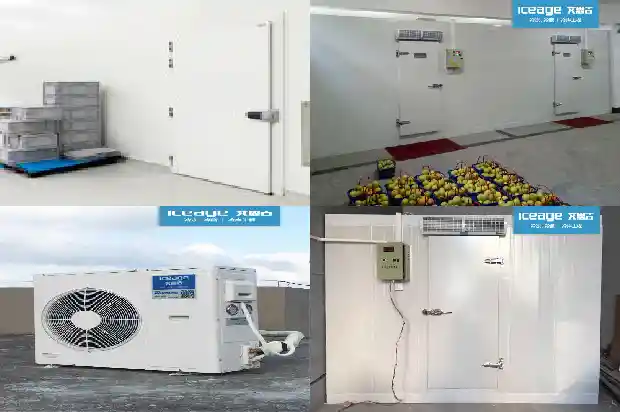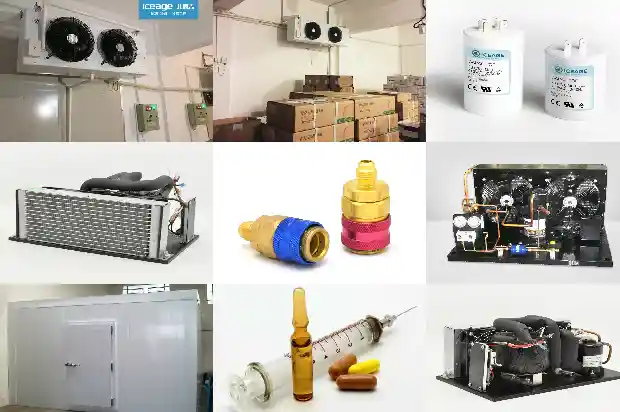Analysis by Experts: Why Does the Four-way Reversing Valve Fail?
2025-03-04
- Overview
In recent years, with the popularization of variable frequency compressors and variable capacity compressors, the failures of four-way electromagnetic reversing valves have gradually increased. Based on customer complaints, the author disassembled and analyzed the failed four-way electromagnetic reversing valves replaced in the market, and found that the reasons for the failure of four-way electromagnetic reversing valves mainly fall into two categories:
- Refrigerant leakage caused by the cracking of the capillary tube or the connecting pipe.
- Faults of the reversing valve caused by liquid hammer.
The author studied the failure mechanisms of these two failure modes and formulated corresponding solutions. This research has great value for ensuring the operational reliability of the four-way electromagnetic reversing valve and the entire air conditioning system.
- Failure Modes of the Four-way Reversing Valve
The author collected 12 failed four-way electromagnetic reversing valves from the market, and through disassembly and analysis, it was found that 8 of them failed due to the cracking of the capillary tube or the connecting pipe, and the other 4 failed due to liquid hammer.
Generally speaking, the reasons for the cracking of the capillary tube or the connecting pipe are as follows:
- The capillary tube cracks due to external force, or there are defects in the capillary tube itself, or the wall thickness is insufficient, resulting in a decrease in local strength and cracking under stress.
- The capillary tube is over-burned, resulting in the coarsening of the grains and a decrease in strength, and cracking occurs under stress.
- The abnormal vibration of the system causes mechanical fatigue cracking under the long-term action of stress.
- Failure Caused by the Cracking of the Capillary Tube or the Connecting Pipe
According to the data analysis, it can be determined that the failures are all caused by mechanical fatigue cracking. After dissecting the failed sample with a crack at the root of the capillary tube, it was found that the pilot valve of this sample was not loose, so it was judged that the vibration source was transmitted from the D pipe.
Due to the abnormal vibration of the D pipe, the stress is concentrated at the root of the capillary tube of the D pipe, and the fatigue cracking at the root of the capillary tube is caused under the long-term action of stress.
Similarly, after dissecting the failed sample with a crack at the root of the connecting pipe, it was found that this sample had no branched capillary cracks, and its morphology was consistent with the characteristics of fatigue fracture.
In addition, determined by the structural characteristics of the four-way electromagnetic reversing valve, when vibration occurs, the joint between the root of the capillary tube or the connecting pipe and the valve body is a stress concentration point. If failures such as fracture or cracking occur, they often appear at the stress concentration parts.
- Failure Caused by Liquid Hammer
Generally speaking, the maximum pressure at the outlet of the compressor is about 3.0 MPa, and the four-way electromagnetic reversing valve may only experience phenomena such as connecting rod deformation and piston bowl recoil when the bearing pressure is above 6.0 MPa.
Once the connecting rod is deformed or the piston bowl recoils, the four-way electromagnetic reversing valve will not be able to work properly. The reason for such a large pressure is mainly that the compressor generates a strong impact force due to an abnormality, and this force is caused by liquid hammer. - Prevention of the Cracking of the Capillary Tube and the Connecting Pipe
To reduce the failures caused by the cracks in the capillary tube and the connecting pipe, it is necessary to reduce the vibration of the system.
Generally, the capillary tube is connected to the valve body by brazing, and flux is used during welding.
Where there is flux and where there is no flux, the shear force on the copper tube is uniform when it is vibrated by the outside world. However, at the junction between the area with flux and the area without flux, due to the change in the effective stress area of the copper tube, the stress change caused by vibration is very large.
Under the action of the accumulated load, the copper tube is most likely to crack at this position.
Therefore, in order to avoid the occurrence of such failures, it is necessary to reduce the vibration of the system.
The commonly adopted method is to conduct stress and strain tests on the position of the four-way electromagnetic reversing valve during the production of the air conditioning prototype to ensure that the vibration is within the controllable range.
At the same time, before the off-the-shelf air conditioning outdoor units in mass production, regular sampling must be carried out for stress and strain monitoring to solve the failure of the four-way electromagnetic reversing valve caused by the vibration of the air conditioning system outdoor unit from the source. - Preventive Measures against Liquid Hammer
Based on the analysis of the failure mechanism caused by liquid hammer, we put forward the following suggestions:
- Attention must be paid to the installation method of the four-way electromagnetic reversing valve. When the space of the outdoor unit and the pipeline design permit, try to select the installation method with the D pipe facing upward. At the same time, the D pipe should be placed above components such as the compressor and the low-pressure accumulator to avoid the refrigerant from remaining in the four-way electromagnetic reversing valve body.
- Overcharging of the refrigerant should be avoided during the refrigerant charging process.
- In addition, changes can also be made to the control logic of the air conditioning system. After the compressor is started, there should be a certain delay before giving the switching signal to the four-way electromagnetic reversing valve. In this way, it can be ensured that the internal liquid in the four-way electromagnetic reversing valve is drained from the valve body or vaporized before the valve is started, avoiding the occurrence of liquid hammer.
Related Articles
- Analysis of the Main Functions and Components of Refrigeration Air Conditioners
- Brief Analysis of Commonly Used Automatic Control Devices in the Refrigeration System
- Analysis of Common Auxiliary Components in the Refrigeration System One by One
- A Detailed Analysis of the Nine Reasons for the Low Pressure in the Refrigeration System!
- Analysis of the Working Process and Principle of Hot Fluoride Defrosting for Air Coolers
- Advantages and Disadvantages of Air-cooled Multi-connected Units and Analysis of Their Components
- Cause Analysis of High Discharge Temperature and Overload Protection of Modular Units
- Analysis of the Causes and Hazards of Corrosion in the Circulating Water System
- Analysis of Common Auxiliary Components in the Refrigeration System
- Analysis of the Composition, Control and Operation Process of Cold Storage System
- Analysis of Causes for Compressor Liquid Hammer, Overheating and Pre - heating
- Analysis of Seven Reasons for Ice Formation in Computer Room Air Conditioners
- Analysis and Troubleshooting of Common Faults in Air - source Heat Pumps
- Analysis of 6 Components in Air - cooled Multi - split Systems
- Analysis of Advantages, Disadvantages and 34 Common Components of Multi - split Air Conditioners
- Common Causes and Analysis of High and Low Pressure Alarms
- Common Causes and Analysis of Compressor Thermal Protection
- Analysis of Common Faults in Compressor Overcurrent and Burnout
